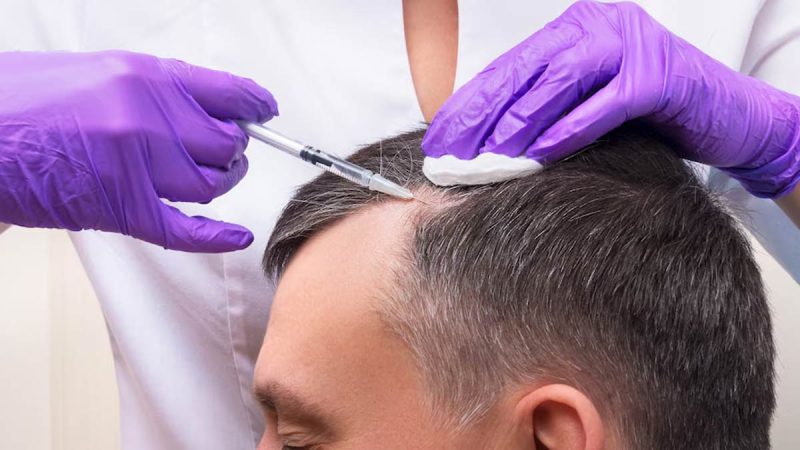Hair Transplant
Hair Transplant
Hair transplant is a surgical procedure that involves the transplantation of hair follicles from one part of the body, typically the back or sides of the scalp (donor area), to the balding or thinning areas (recipient area). This procedure aims to restore natural hair growth in areas affected by hair loss, offering a long-lasting solution for individuals seeking to regain a fuller head of hair.

Types of Hair Transplant
There are primarily two techniques used in hair transplant procedures:
- Follicular Unit Transplantation (FUT): FUT involves harvesting a strip of skin with hair from the donor area, usually the back of the head. The strip is then dissected into individual follicular units under a microscope before being transplanted into the recipient area. While effective, FUT may leave a linear scar along the donor area.
- Follicular Unit Extraction (FUE): FUE is a minimally invasive procedure that involves extracting individual hair follicles directly from the donor area using a specialized tool. These follicular units are then transplanted into the recipient area without the need for surgical incisions. FUE offers a scarless and quicker recovery compared to FUT.
Book an Appointment
Benefits of Hair Transplant
- Permanent Solution: Hair transplant offers a permanent solution to hair loss, as transplanted hair continues to grow naturally.
- Natural Appearance: Transplanted hair blends seamlessly with existing hair, providing a natural and undetectable result.
- Improved Confidence: Restoring a fuller head of hair can significantly enhance self-confidence and improve overall quality of life.
- Minimal Downtime: With advancements in techniques such as FUE, the recovery period is relatively short, allowing individuals to resume their daily activities soon after the procedure.
Risks Associated
While hair transplant is generally considered safe, there are some risks and potential complications to be aware of, including:
- Infection
- Bleeding
- Scarring (more common with FUT)
- Follicle Damage
- Temporary Shock Loss (temporary shedding of transplanted hair)
- Uneven Hair Growth
Preparing for the Procedure
Before undergoing a hair transplant, it’s essential to consult with a qualified surgeon who can assess your suitability for the procedure. Some pre-operative steps may include:
- Medical Evaluation: Assessing your overall health and medical history.
- Discussion of Expectations: Setting realistic expectations regarding the outcome of the procedure.
- Avoiding Blood Thinners: Discontinuing medications or supplements that may increase the risk of bleeding.
During the Operation
The hair transplant procedure typically involves the following steps:
- Anesthesia: Local anesthesia is administered to ensure the procedure is pain-free.
- Donor Hair Harvesting: Hair follicles are harvested from the donor area using either FUT or FUE technique.
- Recipient Site Preparation: Tiny incisions are made in the recipient area to accommodate the transplanted follicles.
- Hair Transplantation: Individual follicular units are carefully transplanted into the recipient sites, ensuring natural-looking results.
After the Operation
After the procedure, it’s crucial to follow post-operative instructions provided by your surgeon, which may include:
- Taking prescribed medications to prevent infection and promote healing.
- Avoid strenuous activities and excessive sun exposure.
- Gentle hair care routine to avoid dislodging transplanted follicles.
- Regular follow-up appointments to monitor progress and address any concerns.
Results
The final results of a hair transplant may vary from person to person and typically become noticeable within a few months following the procedure. As transplanted hair follicles continue to grow, patients can expect to see a gradual improvement in hair density and overall appearance. With proper care and maintenance, the results of a hair transplant can be long-lasting, providing a permanent solution to hair loss.
Schedule Your Appointment Today
Ready to regain your full, natural-looking hair? Schedule your hair transplant consultation today and take the first step towards a more confident you. Book now and let our experts craft a personalized treatment plan just for you!
